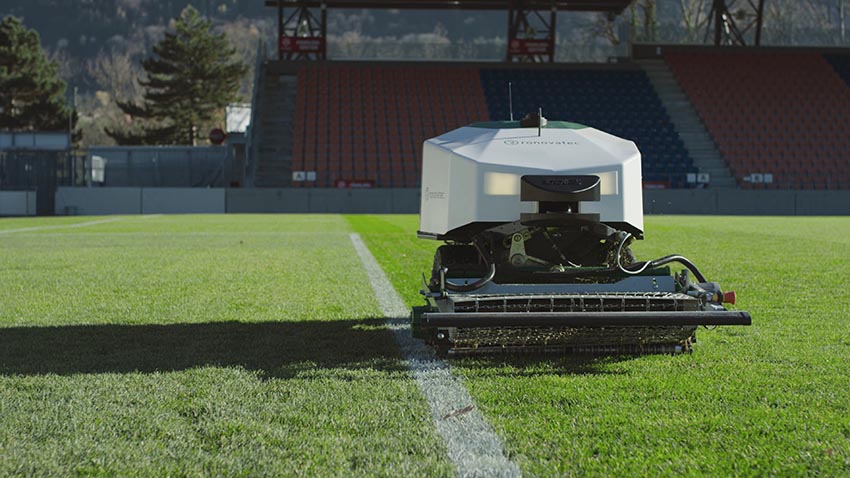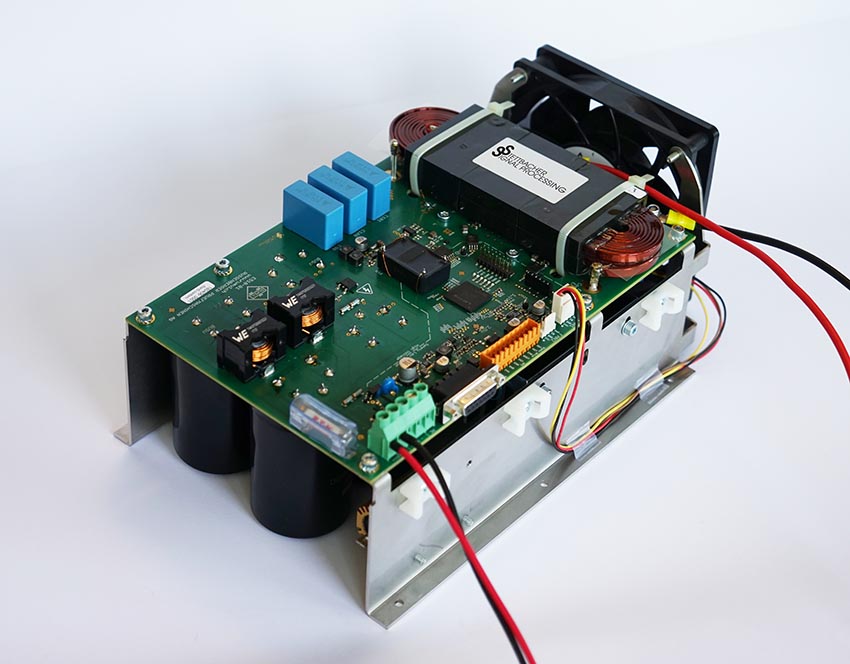Stettbacher Signal Processing AG (SSP) is a 25+ year old Swiss, Zurich-based development company focused on industrial sensing, measurement, control, motion and drives for applications in all kind of machines, science and defense. In recent years, the company focused on robotics, autonomous vehicles, computer vision, artificial intelligence and machine learning.
Apart from algorithms and software, Stettbacher Signal Processing often builds their own application-specific and optimized circuits and PCBs. Hence, they are kind of a full-service provider in advanced technologies.
Interview with Dr. Jürg M. Stettbacher, CEO and Owner of Stettbacher Signal Processing AG.
Easy Engineering: What are the main areas of activity of the company?
Jürg M. Stettbacher: Switzerland is well-known for its industrial heavy-weights, like ABB, Schindler, Sulzer, Bühler, Rieter and many more. Stettbacher has successfully been working for quite a few of them. However, the really ingenious croup is the mass of hundreds of small but highly specialized Swiss companies in almost every field. These are the most important customers for SSP. Some of them are focused on very particular measurement methods used in analytics and quality control. Others are specialized on highly dynamic motion and precise movements. We developed specialized high-speed precision measurement frontends with dozens of absolutely synchronized channels, each with >500’000 samples per second and parallel real-time data processing in an FPGA (field-programmable gate array).
E.E: What’s the news about new products?
J.M.S: As Stettbacher Signal Processing in mainly working for other companies, there are not many own products. However, for computer and machine vision applications, SSP developed its own camera series called O-3000, which are industrial-grade cameras with long-time support. Their drivers and software are all open-source. Hence, O-3000 products can be used on any platform and are not limited to a certain selection of proprietary systems. Currently, a 3D camera for stereo-vision is being developed and will be available in Q3 2022. This camera will provide normal and depth images. On top it will be able to identify objects in the field of view. Hence, this camera will be used in machine vision and in artificial intelligence applications.

E.E: What are the ranges of products?
J.M.S: Stettbacher’s main focus in on precision measurement and demanding machine controllers. These fields perfectly combine in autonomous vehicles, where pose estimation is a major issue. We have our own solutions for sensory processing, pose estimation, map handling and path planning, motor control, collision avoidance, and support functions like mapping, battery management and so on. Hence, we build complete robot controllers including hardware and software. We also developed highly dynamic motor control solutions for industrial motion, able to perform precise movements within a few milliseconds. One of our smallest products was a measurement device the size of quarter of a match box including a vibration sensor and a microprocessor for filtering the digital sensor signal in order to detect and discriminate certain events and notify through CAN.
E.E: At what stage is the market where you are currently active?
J.M.S: Stettbacher’s market is pretty wide: from pharma to industrial control, analytics, testing, defense and training, and so on. These markets are well established. However, new technologies open many more opportunities. Therefore, new products emerge on a high rate, ensuring excellence and competitiveness or SSP’s customers.
E.E: What can you tell us about market trends?
J.M.S: The big trends are currently in autonomous technologies and machine learning. However, they are not just temporary fashions. This is a substantially new technology which opens completely new fields of applications, and hence new opportunities. Here is an example: In order for an autonomous mower not to kill small animals, we trained a neural network to identify frogs, hedgehogs, ducks, and some others in a camera image. However, for the mower not to stop in front of litter, we also trained the same network to spot bottles, plastic cups, paper and so on. It took us just a few days and we had a working system which was relieably able to distinguish animals from rubbish and on top was able to tell what animal (or item) it found. Without the new methods of machine learning, that would hardly be feasible.

E.E: What are the most innovative products marketed?
J.M.S: The most innovative products in Stettbacher’s universe are those based on the conflation of new methods (like machine learning; sorry I don’t like the term ‘artificial intelligence’, therefore I try to avoid it) and the computing power available even in today’s embedded systems. This sparks tons of new products and solutions. The technical world has become much wider.
E.E: What estimations do you have for 2022?
J.M.S: The year 2022 will be bright. The Corona virus was not able to stop innovation. There are lots of opportunities. Let’s go for them!

